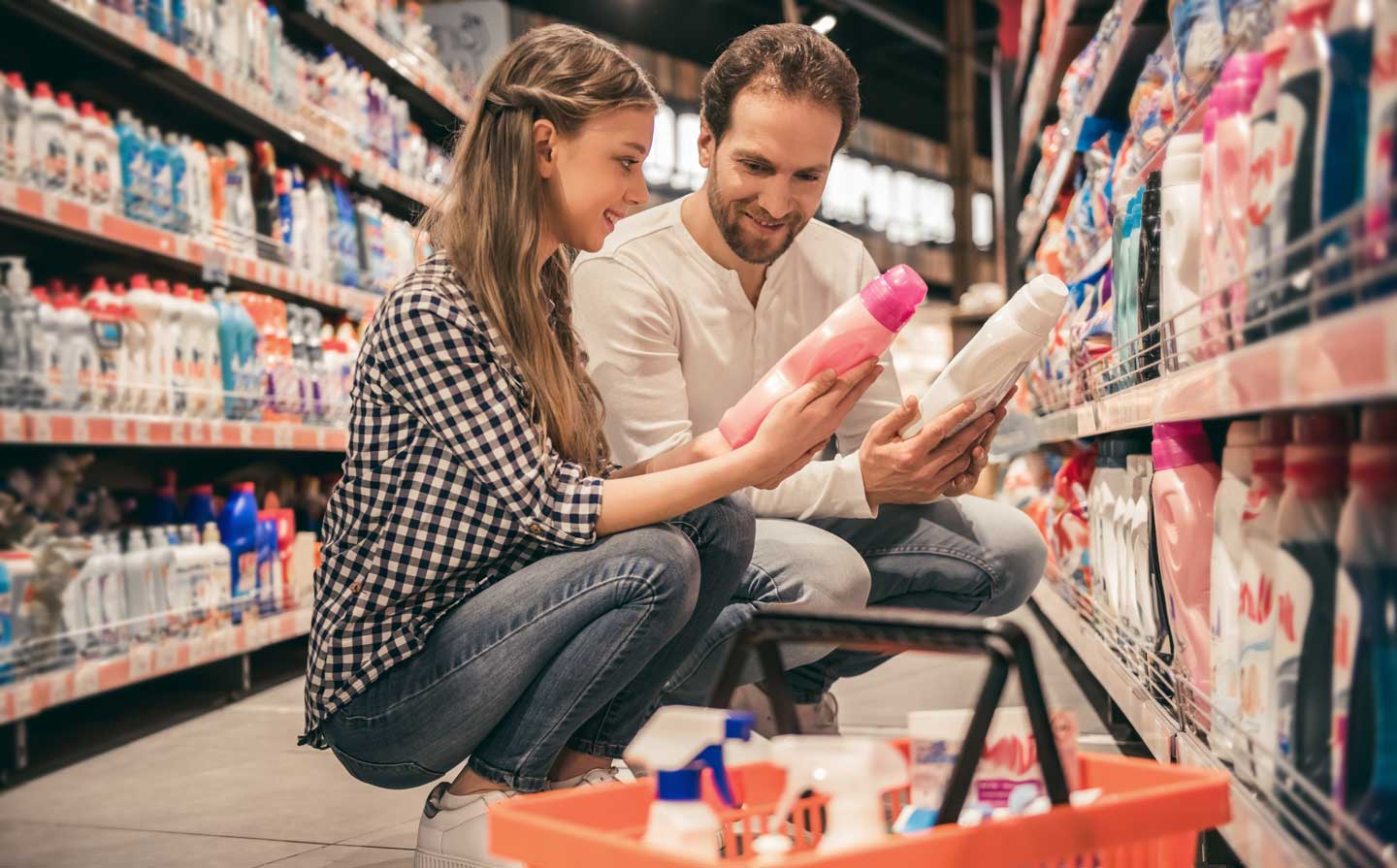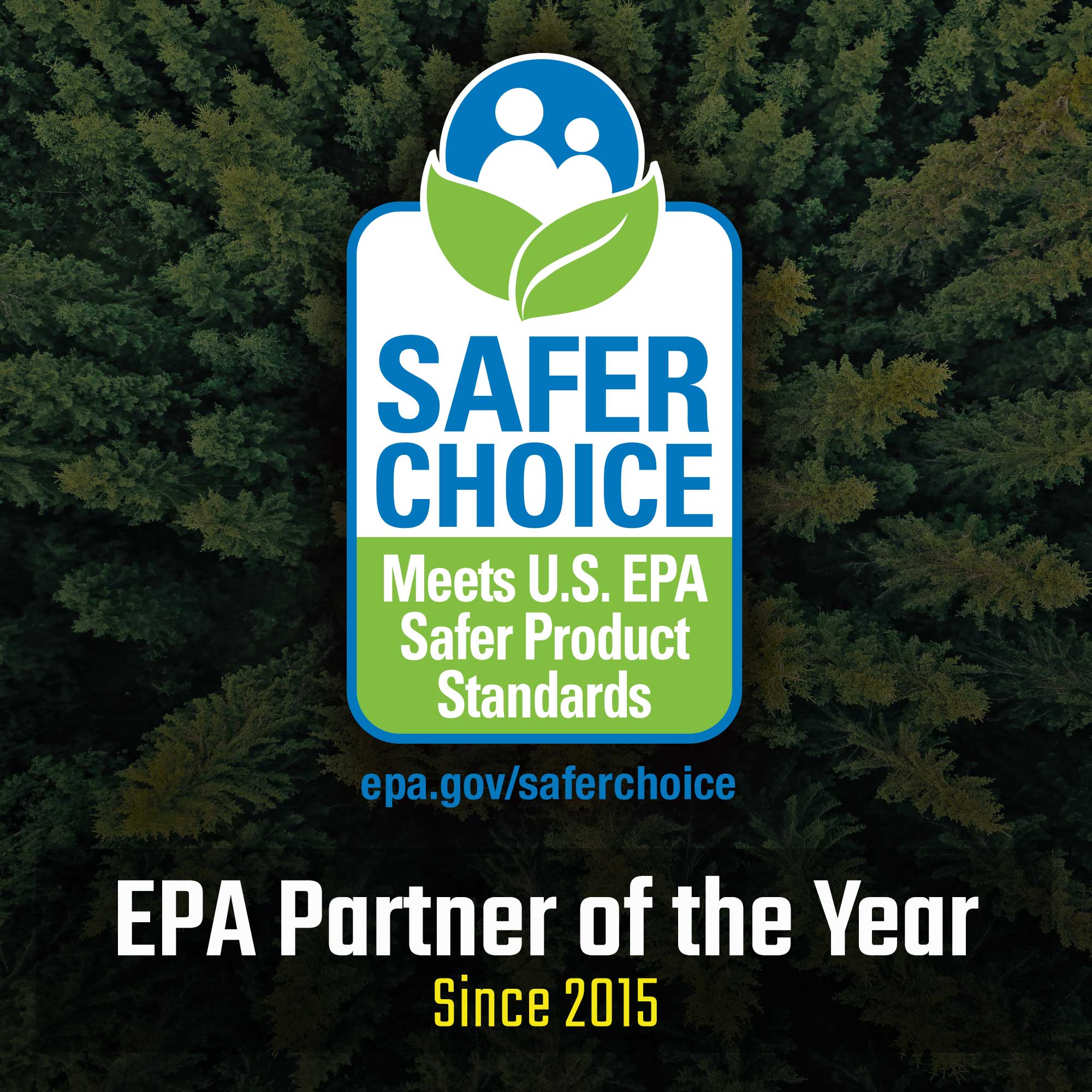Cómo evitar productos de limpieza domésticos peligrosos

Mantener una casa limpia es saludable para ti y tu familia. Sin embargo, algunos productos químicos en los productos de limpieza pueden ser perjudiciales no solo para tu familia, sino también para el medio ambiente. Mientras limpiamos, podemos inhalar estos productos químicos y absorberlos a través de la piel. Y al terminar, muchas personas vierten los restos del producto por el desagüe, lo que puede terminar en nuestros sistemas acuáticos y amenazar la vida marina.
Existen cientos de ingredientes con nombres de múltiples sílabas en una amplia variedad de productos de limpieza en el mercado. Afortunadamente, no necesitas un doctorado en química para tomar decisiones informadas. Aquí hay algunas cosas a tener en cuenta al elegir productos de limpieza más seguros.
Ingredientes peligrosos a evitar
Que un producto de limpieza no lleve el logotipo de Safer Choice no significa necesariamente que no sea seguro. Solo significa que deberías mirar más de cerca los ingredientes en la etiqueta para determinar si pueden causar daño a tu familia, mascotas o al medio ambiente. La lista de componentes dañinos es bastante larga, pero aquí están algunos de los ingredientes más comunes que deberías evitar y por qué:
Lejía:
El ingrediente activo en la lejía es “hipoclorito de sodio” y puede aparecer con otros nombres como “Lejía de Cloro”. Es uno de los ingredientes más comunes en productos de limpieza del hogar y también uno de los más dañinos. Aproximadamente el 40% de las lesiones reportadas fueron causadas por la exposición a la lejía doméstica. Se ha determinado que la exposición puede causar náuseas, dificultad para respirar, dolores en el pecho, irritación en las vías respiratorias, entre otros efectos perjudiciales para la salud. Las personas con asma u otros problemas respiratorios son especialmente susceptibles. Lo que agrava el problema es que cuando se mezcla lejía con otros productos de limpieza, se produce una reacción química que puede resultar en vapores tóxicos peligrosos.
Amoníaco:
El amoníaco tiene un olor potente que la mayoría de las personas reconoce, por lo que no es difícil saber si estás usando un producto que contiene amoníaco. Sin embargo, incluso niveles bajos de amoníaco en el aire pueden causar tos e irritación en la nariz y garganta, particularmente para aquellos con asma y otras sensibilidades. Si bien no es tan dañino para el medio ambiente en niveles bajos, el amoníaco es una sustancia corrosiva que puede causar quemaduras si entra en contacto con la piel o los ojos. Además, los vapores de amoníaco son inflamables, lo que representa riesgos adicionales si no se almacena correctamente.
Percloroetileno:
Un líquido incoloro también conocido como PERC, PCE o Tetracloroetileno. Se utiliza principalmente en la limpieza en seco, removedores de manchas, limpiadores de alfombras y desengrasantes. Los estudios han encontrado que está asociado con varios tipos de cáncer, incluidos cáncer de vejiga, linfoma no Hodgkin y mieloma múltiple. También puede causar efectos adversos en los riñones, hígado, sistema inmunológico y sistema hematológico, así como en el desarrollo y la reproducción.
Fosfatos:
Los fosfatos, o Fosfato Trisódico para ser más precisos, han sido un ingrediente común en productos de limpieza desde la década de 1950. Durante muchos años se lo consideró un químico de uso general en la industria. Sin embargo, en las últimas décadas, se han hecho evidentes sus efectos en el medio ambiente. Aunque tienen baja toxicidad, las altas concentraciones causan el crecimiento excesivo de plantas como algas, lo que impide que la luz y el oxígeno lleguen al agua, lo que ha llevado a la destrucción de ecosistemas locales, una razón importante por la cual muchos estados han aprobado leyes para regular o prohibir los fosfatos en productos de limpieza domésticos.
Alcohol:
El alcohol o alcohol isopropílico es un solvente barato y efectivo para limpiar y desinfectar, por lo que es un ingrediente común en muchos productos de limpieza. Desafortunadamente, el alcohol se considera una sustancia tóxica para los humanos y es conocido por absorberse fácilmente a través de la piel. Inhalar los vapores del alcohol isopropílico puede causar dolores de cabeza, mareos, vómitos e incluso pérdida del conocimiento. También es uno de los ingredientes más inflamables en productos de limpieza, lo que lo hace extremadamente peligroso si no se almacena adecuadamente.
Productos seguros que buscar
Identificando productos seguros con el logotipo de EPA Safer Choice
Una de las formas más fáciles de saber si un producto es una opción más segura es si lleva el logotipo de EPA Safer Choice. Los productos que llevan el logotipo Safer Choice han sido evaluados mediante un riguroso proceso científico y se determinó que contienen solo los ingredientes más seguros sin sacrificar la calidad ni el rendimiento. Los criterios se basan en la experiencia de la EPA en la evaluación de propiedades físicas y toxicológicas de una amplia gama de químicos utilizados en productos de limpieza.
Productos biodegradables para una limpieza ecológica
Biodegradable simplemente significa que un artículo puede descomponerse y volver a la naturaleza sin causar daño. Esto ocurre mediante síntesis química o fermentación por microorganismos. Para que los productos o materiales califiquen como biodegradables, deben descomponerse por completo en elementos naturales en poco tiempo después de su eliminación. Muchos químicos no biodegradables han demostrado causar daño a las plantas y la vida silvestre, especialmente la vida acuática. Busca productos que tengan "biodegradable" en la etiqueta.
Seleccionando opciones sostenibles con productos certificados por USDA Biobased
Esta etiqueta asegura al consumidor que el producto contiene una cantidad verificada de ingredientes biológicos renovables (conocidos como contenido biológico). Los productos biológicos se derivan de materias primas como plantas y otros materiales agrícolas, marinos y forestales renovables. Generalmente, los productos biológicos proporcionan una alternativa a los productos convencionales derivados del petróleo, ayudándonos a aumentar el uso de recursos renovables y disminuir el uso de recursos no renovables como el petróleo.
Si encuentras que ya tienes productos de limpieza con estos ingredientes bajo tu fregadero, aquí tienes información útil para garantizar la seguridad de tu familia:
-
Lee las etiquetas cuidadosamente antes de usar y mantén todos los productos de limpieza en su empaque original.
-
Asegúrate de que todos los productos de limpieza estén bien sellados y almacenados en gabinetes con cerraduras a prueba de niños, si hay niños pequeños en casa.
-
Número de línea de control de envenenamiento: 800-222-1222

